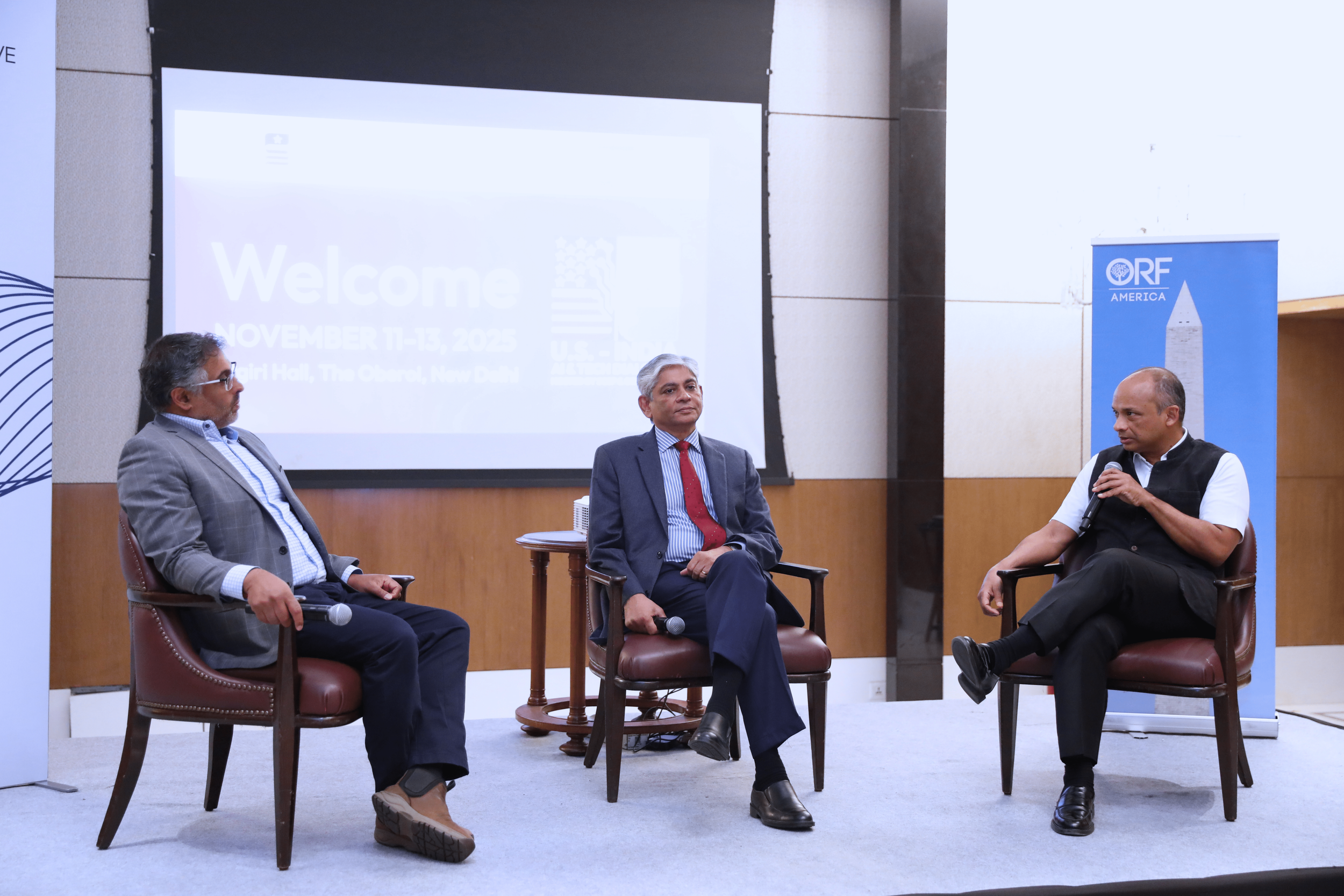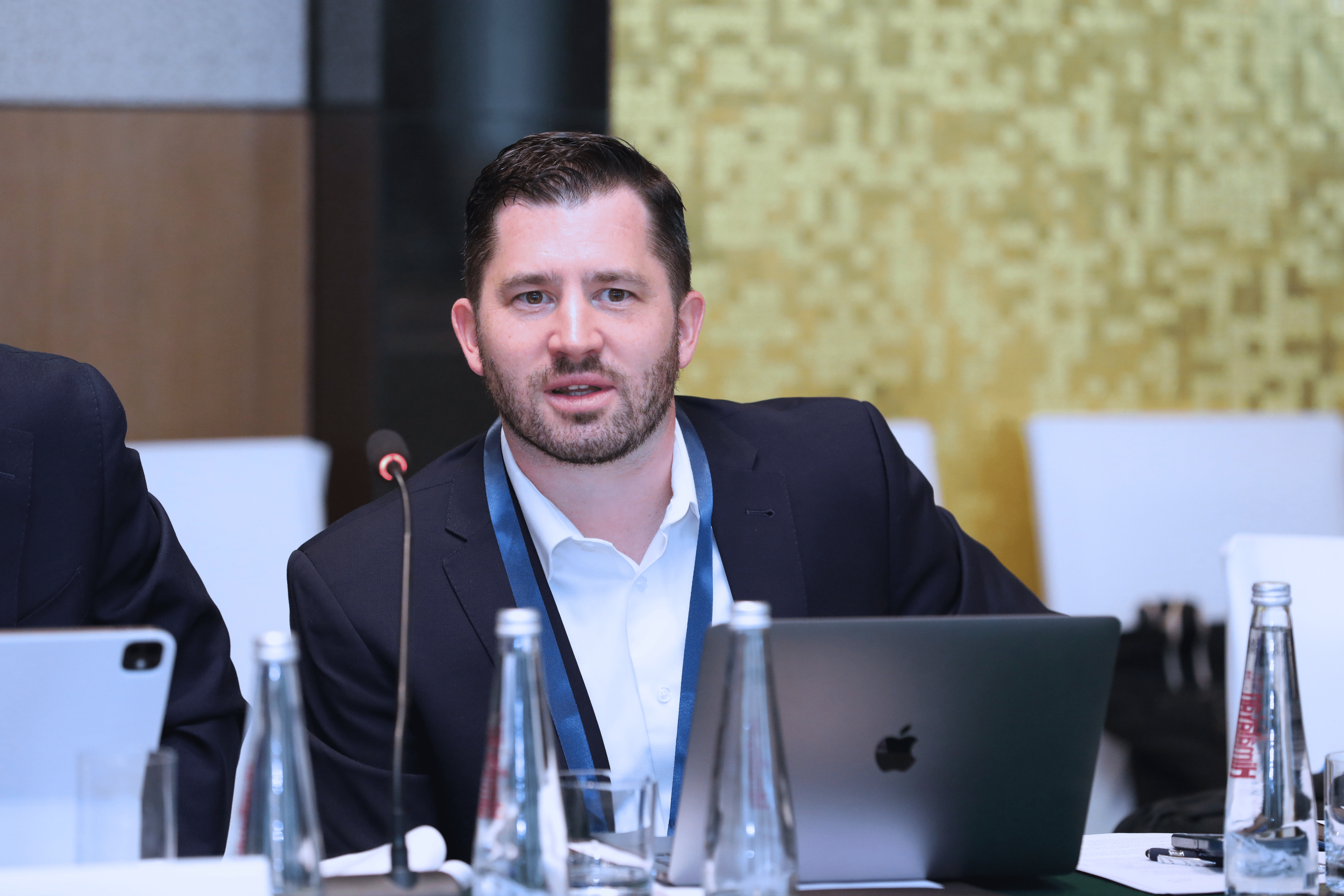Artificial intelligence (AI) and emerging technologies are a central priority in U.S.-India relations, given their significance for economic growth, national security, competitiveness and sustainable development. From November 11 to 13, ORF America, in partnership with the Special Competitive Studies Project (SCSP), convened the second U.S.-India AI and Technology Dialogue in New Delhi, following the launch of the initiative on the sidelines of the SCSP AI Expo in Washington, D.C. on June 3 earlier this year.
Led by ORF America’s Andreas Kuehn and SCSP’s Joe Wang, the dialogue convened over 60 participants over the course of three days, with select representatives from Indian and U.S. companies and AI start-ups, government officials from both countries, representatives from trade associations, as well as AI experts and thought leaders. The dialogue was recognized by the IndiaAI Mission as an official pre-summit event for the AI Impact Summit, which India will host in February 2026.
Building on the insights gathered from the Washington convening and a series of expert workstreams, the Delhi meeting focused on four core areas of discussion: AI Infrastructure and Advanced Compute; AI Applications; Talent and Workforce; and Policies. The organizers presented draft recommendations that dialogue participants discussed to inform a joint report and action plan. The report, which is scheduled for early next year, will distill key opportunities and priority areas for advancing U.S.–India AI and Technology Cooperation. This report will provide input for ongoing official efforts, including upcoming TRUST and Quad meetings.
Day 1: Situating U.S.-India Relations in Current Geopolitics
Dhruva Jaishankar and Joe Wang welcomed all participants and provided opening remarks ahead of the dialogue’s reception. In a fireside chat, former Indian Ambassador to the United States, Arun Singh, and WestExec Advisors’ Vikram Singh, assessed the current state of U.S.-India relations. Moderated by Eurasia Group’s Pramit Pal Chaudhuri, the conversation covered a range of pressing issues, including bilateral defense and military cooperation, the ongoing trade negotiations, India’s energy security, the role of U.S. technology companies in India, India’s relations with Russia, and U.S. domestic politics and foreign policy priorities. The day concluded with a dinner with dialogue participants.





Day 2: Driving AI Applications and Adoption through Investments and Policies
The dialogue formally began with remarks from Ambassador Kenneth Juster, co-chair of the dialogue and former U.S. Ambassador to India. He reminded participants that technology has historically been a critical pillar of U.S.-India relations and emphasized that current tensions are a temporary bump rather than a fundamental deterioration of this strong and strategic partnership. Salesforce’s Arundhati Bhattacharya, the company’s President and CEO for South Asia, provided opening keynote remarks. Ministry of Electronics and Information Technology’s (MeitY) Mohammed Y Safirulla K outlined India’s priorities for the upcoming AI Impact Summit, while Invest India’s Managing Director and CEO, Nivruti Rai, provided an overview of India attracting technology-related foreign direct investments in data centers, semiconductors, undersea cables, and other technology sectors on the order of $85 billion. The participants discussed and refined draft recommendations related to AI Applications and Policies. The day concluded with demos from Indian tech startups Netradyne (fleet safety) and Perceptyne (robotics and industrial automation).







Day 3: India’s AI Infrastructure Buildout and Joint Efforts to Train AI Talent
The dialogue continued with dedicated sessions to ensure India’s timely buildout of AI infrastructure and secure related supply chains, while also addressing the diverse needs of both nations to train an AI-ready workforce and ensure sufficient technical AI talent. Participants were joined by MeitY’s Secretary, S. Krishnan, who oversees the India Semiconductor Mission, the India AI Mission, and other priority areas of India’s technology and electronics development. The secretary emphasized AI infrastructure, semiconductors, cybersecurity, and blockchain in his remarks and highlighted the need for collaborations with U.S. companies in building data centers in India. A demo session featured two Indian tech start-ups, Kissan AI (agriculture) and Tecnod8 (generative AI for industrial manufacturing and engineering). The dialogue concluded with a conversation between Ambassador Arun Singh and Ambassador Kenneth Juster on the future of bilateral relations and how to leverage critical and emerging technology to foster the U.S.-India partnership.






Key insights and takeaways:
Establish a U.S.-India Working Group on AI: Indian and U.S. officials should seek to create an AI working group to address issues such as investments, infrastructure, data, clearances, and export controls, to loosely coordinate across various existing U.S.-India forums. As AI also cuts across various departments, ministries, and agencies, a Working Group on AI may thus be useful to address challenges as they arise but also identify opportunities for further collaboration and tie in industry and society stakeholders as needed.
Applications must be specific and impactful: Both countries should seek to collaborate on projects within specific domains and with tangible impact. Relevant domains identified for collaboration include defense applications for maritime domain awareness and border security; dual-use applications for space awareness, remote sensing, cyber incident detection and mitigation, and humanitarian assistance and disaster relief; as well as civilian applications in agriculture, healthcare, wildfire management, translation and weather forecasting. For example, AI-enabled weather models can help Indian farmers to take mitigation measures ahead of cloudbursts and other localized weather challenges, enabling greater geographic accuracy and longer lead-up times. These projects ought to be commercially viable to attract private sector investments and scalable from pilots to full-scale deployments to unlock the full potential of AI.
Full-stack AI infrastructure requires both capital and policy innovation: There is a greater appetite for domestic and foreign investments in data centers in India. Such efforts are needed to deliver India’s AI infrastructure buildout in a timely manner to meet the country’s AI needs. While this can be realized through a combination of investments from Indian and U.S. companies as well as venture capital firms, building a sustainable AI stack for the Indian market requires inclusive participation from Indian technology firms and stakeholders. The scope of the full AI stack should extend beyond AI servers to encompass edge computing, connectivity, adequate power supply and other infrastructure needs as well as deployment options for open-source and open-weight models for India and countries in the Global South.
Talent and workforce challenges will persist in the long run: India produces around 1.5 million engineering graduates per year and the tech sector accounts for more than five million employees, including software engineers and developers. Yet, there is a mismatch between skills required by the industry and the talent supplied by universities, especially concerning recent graduates. Furthermore, there is a lack of data on what specific skills are required by the AI workforce. These challenges are likely to persist for the foreseeable future, as they require updating university curricula, increasing the number of instructors and faculty, and providing incentives for reskilling and vocational training. In the short run, both countries can benefit from a joint skill mapping exercise, in line with the G20’s global skills mapping, and create a standardized certification system, which can aid talent mobility between the United States and India.
U.S.-India AI and technology collaboration remains crucial: Despite calls for sovereign AI, working with like-minded countries and trusted private companies is essential to create technology options, obtain foreign investment, gain know-how, and achieve scale and adoption of AI.
